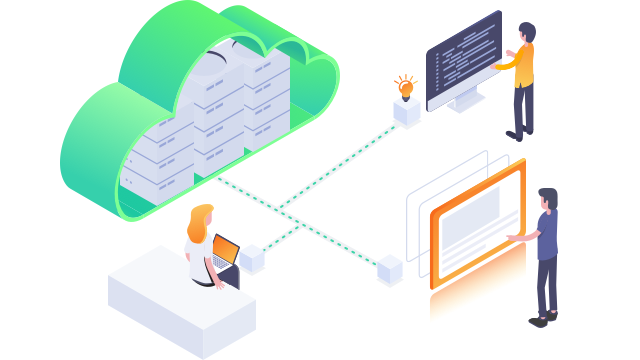Accelerate AI Innovation with Enterprise GPU Power and AI Studio
Bitdeer AI Cloud delivers secure, scalable GPU servers and an intuitive AI Studio platform to streamline AI and ML workflows. As an NVIDIA Preferred Partner, we provide top-tier compute power, real-time collaboration, scalable training, seamless model management, and secure storage—empowering faster, smarter innovation.

Resources
Navigate through our resource hub to find what you need. Subscribe to keep up-to-date with our latest news, announcements and blog posts.
Subscribe to our newsletter
How Does Bitcoin Mining Works
Aug 18 2023
In this video, you'll gain insights into the history of Bitcoin mining and the principles behind it. Join us for a 2-minute journey to explore the world of Bitcoin mining!
Bitcoin is the world's first decentralized digital asset, a concept introduced in 2008 by a man who goes by the pseudonym Satoshi Nakamoto. The great thing about it compared to other currencies is that you can transmit bitcoins to others directly over the internet, no matter where you are, without going through any intermediaries (e.g. banks, financial institutions).
In the Bitcoin system, there is no centralized accounting, but rather an incentive for everyone to account for Bitcoin through "block rewards". Everyone can participate in the bookkeeping. Every 10 minutes, bookkeepers across the network work together to calculate a complex math problem, and whoever figures out the answer first gets the right to bookkeeping. The bookkeeper will be rewarded with bitcoins automatically generated by the system after packaging the transaction data into blocks within a specified time period.
This reward-giving behavior is so similar to traditional gold mining that the process is also called mining, and the bookkeepers are called miners. The total number of bitcoins is constant, 21 million, and the rewards are cut in half about every four years, so in about 2140 Bitcoins will no longer be born and transaction fees will be the primary income for miners in the future.
When Bitcoin was born, miners mainly used computer CPUs to calculate math problems, but soon after someone found that graphics cards were significantly faster and more suitable for mining, and as miners gradually iterated their mining equipment, CPU and graphics card mining have basically been retired and rendered obsolete, replaced by the Asic mining machines specifically designed for mining.
Due to the gradual growth of the number of miners, mining difficulty continues to increase. In order to overcome this problem, miners have developed a mining method called "mining pools", in which they pool their hashrate and share the proceeds according to the percentage of hashrate.
As bitcoin mining has become more specialized, the requirements to become a miner have become more demanding. Finding cheap sources of electricity, building mining farms, purchasing mining machines, and mining machine operation and maintenance have become common problems for all miners.
To lower the threshold of becoming a miner, mining platforms similar to cloud servers have emerged. Miners can easily place orders from home and purchase mining packages to cloud mine bitcoins directly through a mining machine-sharing service platform, such as Bitdeer.
*Information provided in this article is for general information and reference only and does not constitute nor is intended to be construed as any advertisement, professional advice, offer, solicitation, or recommendation to deal in any product. No guarantee, representation, warranty or undertaking, express or implied, is made as to the fairness, accuracy, timeliness, completeness or correctness of any information, or the future returns, performance or outcome of any product. Bitdeer expressly excludes any and all liability (to the extent permitted by applicable law) in respect of the information provided in this article, and in no event shall Bitdeer be liable to any person for any losses incurred or damages suffered as a result of any reliance on any information in this article.


